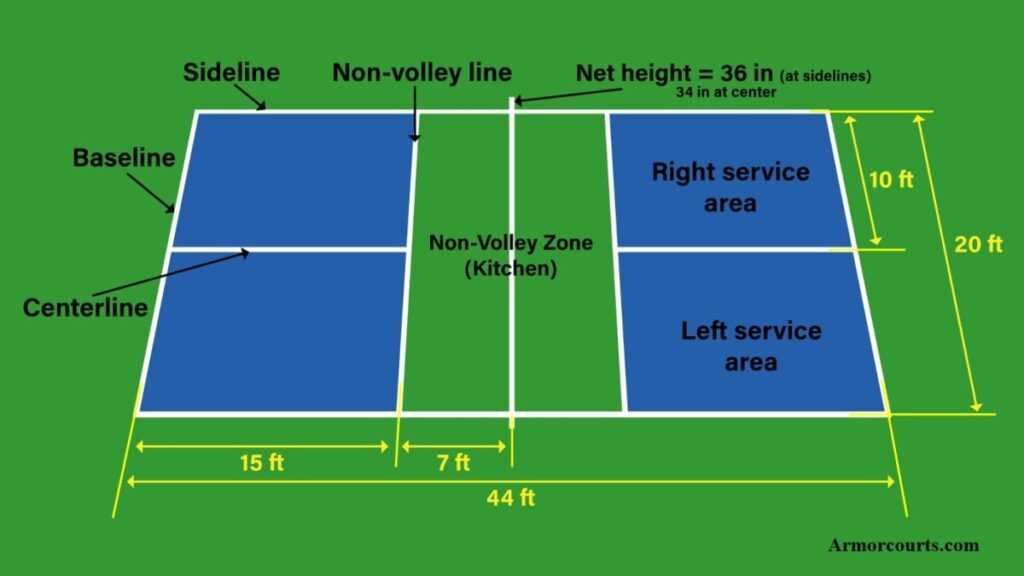Sustainable Practices in Pickleball Court Building And Construction You Should Know
As the popularity of pickleball remains to increase, so also does the requirement for lasting practices in court building and construction. This strategy not only addresses ecological concerns however also boosts the durability and functionality of the courts. From selecting environment-friendly materials to carrying out efficient drainage and energy-saving illumination options, there are many methods to think about. The influence of these techniques expands much beyond the court itself. Understanding just how each element contributes to an extra sustainable future welcomes further expedition into the elaborate equilibrium between leisure growth and environmental stewardship.
Choosing Eco-Friendly Products
Picking environment-friendly materials is an essential step in the construction of sustainable pickleball courts. The choice of lasting materials not only reduces environmental impact yet additionally improves the durability and efficiency of the court. Key products include recycled rubber for the surface area, which provides superb sturdiness and shock absorption while drawing away waste from land fills.
In addition, using locally sourced materials reduces transportation emissions and sustains regional economic situations. Pickleball court construction. Making use of indigenous woods for fence and seats can offer a sustainable aesthetic while guaranteeing durability against the elements.
Integrating absorptive materials for court foundations can even more contribute to sustainability by permitting all-natural water drain and reducing drainage. These choices not only safeguard regional ecological communities however also advertise much healthier play environments.
Effective Drain Solutions
While the option of environmentally friendly products is necessary, implementing efficient drain options is just as critical for preserving lasting pickleball courts. Appropriate water drainage not just safeguards the court surface from water damages however likewise decreases erosion and drainage, advertising ecological integrity.
Efficient drainage systems can consist of absorptive paving, which enables water to infiltrate the ground instead of pooling on the surface. This minimizes the likelihood of standing water, which can lead to mold and mildew and various other upkeep problems. In addition, integrating tactically placed water drainage channels and swales can direct excess water away from the court area, making certain a dry having fun surface area and protecting against dirt erosion.
Using native plant life in the landscaping around the courts can further enhance water drainage by soaking up excess water and reducing overflow. These plants require less irrigation and advertise biodiversity, lining up with lasting practices.
In addition, it is vital to on a regular basis preserve the drain system to ensure its long-lasting efficiency. This consists of clearing up particles and tracking for obstructions. By focusing on effective drainage options, pickleball court erectors can considerably contribute to the sustainability and durability of the facility, eventually profiting both players and the environment.
Energy-Efficient Lights Options
As the need for pickleball continues to expand, incorporating energy-efficient lights alternatives into court style has actually come to be significantly important for sustainability. Traditional lighting systems frequently eat extreme energy, contributing to higher functional prices and ecological influence. Taking on modern-day, energy-efficient innovations is vital for both new building and constructions and restorations.
LED (Light Emitting Diode) lighting stands apart as a top option because of its durability and power savings (Pickleball court construction). Contrasted to standard lights, LEDs utilize approximately 75% less energy and can last as much as 25 times much longer, significantly lowering maintenance prices. The directional nature of LED lights reduces light contamination, ensuring that lighting is focused on the court rather than bordering locations.

Sustainable Surface Alternatives
Exploring sustainable surface area choices for pickleball courts has gotten grip among builders and players alike. The emphasis on environment-friendly products not just straightens with the expanding ecological recognition but also enhances the performance go to these guys and resilience of the courts.
One prominent choice is the use of recycled rubber, which can be sourced from utilized tires. This product gives superb shock absorption, decreasing the risk of injuries for players while advertising sustainability. Additionally, modular tiles made from recycled plastics offer one more viable alternative. These floor tiles are simple to replace and install, and their convenience permits various court arrangements.
All-natural turf courts are additionally emerging as a sustainable option, advertising biodiversity and lowering the heat island effect. They call for normal upkeep and water, which might not straighten with all sustainability browse around these guys objectives.
Water Preservation Techniques

An additional efficient technique includes the installment of rain harvesting systems. These systems keep and accumulate rainwater for use in keeping court surfaces and landscape design. This method not just conserves drinkable water yet also minimizes dependence on community sources.
In addition, employing drought-resistant landscape design around the courts is essential. Native plants need much less water and are much better adjusted to local climate problems, hence decreasing overall water usage. Furthermore, making use of efficient watering systems, such as drip watering, makes certain that water is delivered straight to plant roots, lessening dissipation and waste.
Final Thought
Integrating sustainable methods in pickleball court building considerably adds to ecological conservation and source performance. Making use of green products, carrying out efficient drain options, and embracing energy-efficient lighting options can greatly lower environmental influence. In addition, checking out sustainable surface area options and employing water preservation techniques improve the total sustainability of these entertainment centers - Pickleball court construction. By prioritizing these techniques, the building and construction of pickleball courts can align with more comprehensive environmental objectives while promoting longevity and capability within neighborhoods.
As the popularity of pickleball continues to increase, so also does the demand for sustainable practices in court building.Picking eco-friendly materials is a critical step in imp source the building of lasting pickleball courts. By focusing on energy-efficient lighting options, pickleball court builders can contribute to a more sustainable future while meeting the requirements of stakeholders and players alike.Integrating sustainable surface area options not only improves the performance of pickleball courts but also paves the means for executing efficient water conservation techniques.Incorporating lasting techniques in pickleball court building and construction dramatically contributes to environmental conservation and resource efficiency.